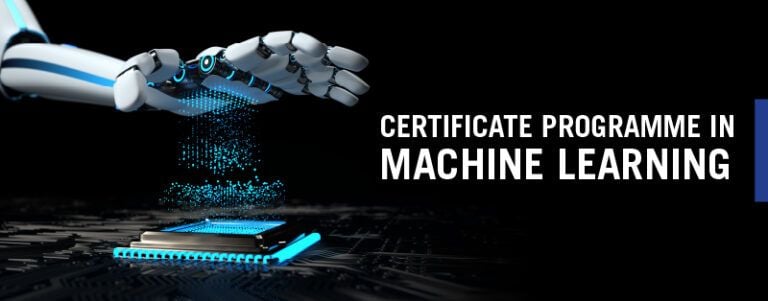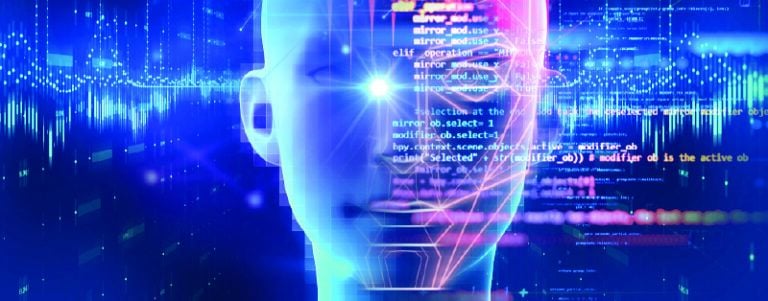What is Multimodal AI? Here’s Everything You Need to Know

Picture this: you’re at a friend’s gathering, surrounded by mouth-watering dishes. However, one dish in particular catches your eye. It’s something you’ve never encountered before. Your curiosity is piqued. How can you uncover the secrets of this dish? Imagine simply pointing your phone’s camera at it, and voilà! You have a complete recipe and a detailed description right at your fingertips. Wouldn’t that be wonderful? Well, this seamless fusion of visual input and informative output is the essence of multimodal AI. In essence, it can process a diverse range of data types and produce results that intersperse various types of data which are more nuanced, richer, and more context-specific. So, what exactly is multimodal AI? Moreover, how does it work, and what are its uses? Also, what limitations or challenges does it pose? Let’s find out.
What is Multimodal AI, and How Does it Differ From Traditional AI Models? 
Multimodal AI describes artificial intelligence systems that can simultaneously process and interpret data from various sources such as text, images, audio, and video. Unlike traditional AI models that depend on a single type of data, multimodal AI provides a holistic approach to data processing. For instance, a multimodal AI system could interpret a live sports broadcast by understanding the commentary (audio), recognizing players and actions on the field (visual), and reading captions or statistics (textual). As a result, this comprehensive analysis produces a much richer and nuanced understanding of the game. Another example would be an AI assistant that can analyze voice commands, identify objects in images, and read text to provide detailed, context-aware responses, showcasing the versatility and advanced capabilities of multimodal AI compared to traditional models.
How Multimodal AI Works
Relying heavily on extremely sophisticated machine learning and neural networks, multimodal AI functions through a network of interconnected components, with each component managing different aspects of data processing to ensure efficient interpretation of varied data types
A. Input Module
The input module is the first stage, where multimodal AI systems receive various types of data. Each type of data—be it text, images, or audio—is processed using specialized sub-models tailored to that specific input. For example, textual data might be handled by a Natural Language Processing (NLP) model, while images are processed by a computer vision model. In essence, this stage is crucial for preparing the data for subsequent integration and analysis using machine learning algorithms.
B. Fusion Module
Next comes the fusion model—the core of multimodal AI. In short, it is here that processed data from different modalities are integrated into a unified representation. Early fusion combines raw data from various modalities, whereas late fusion merges the outputs of the sub-models after initial processing. Neural networks play a significant role in this fusion process by learning the relationships between different data types. In essence, this step is vital for synthesizing diverse information, enabling the machine learning algorithms to make more accurate and contextually aware decisions.
ALSO READ: What are the Best LLMs Available in India?
C. Output Module
Once the fused data has been produced, the output module generates the final outputs. Notably, these outputs can vary depending on the application and input data, predictions, including decisions, synthesized text, etc. For instance, a multimodal AI system might produce a comprehensive report that combines textual analysis with visual data or offer a spoken response based on integrated audio and text inputs.
How Multimodal AI Differs From Unimodal AI
The differences between the two are significant. For starters, the more traditional unimodal AI systems manage only one type of data input. The table below further highlights the key differences:
| Features | Multimodal Artificial Intelligence | Unimodal Artificial Intelligence |
| Data Types | Single (text or image) | Multiple (text, images, audio, video) |
| Comprehension | Limited to one aspect | Holistic, multidimensional |
| Contextual Interpretation | Less nuanced | Rich, detailed |
In essence, unimodal AI systems, such as those handling only text or image data, have a narrow scope and understanding. For instance, a text-based AI might excel at language processing but struggle with visual information. In contrast, multimodal AI platforms like GPT-4 and Google’s Gemini process various data types, delivering a more comprehensive and detailed analysis.
How Multimodal AI Differs From Generative AI
Although multimodal AI and generative AI share similarities, they differ fundamentally. For instance, generative AI focuses on creating new content from a single type of prompt, such as creating images from textual descriptions. In contrast, multimodal AI processes and understands different sensory inputs, allowing users to input various data types and receive multimodal outputs. Consequently, this ability enables more versatile and contextually aware applications, enhancing interactions and decision-making processes.
How is Multimodal AI Being Used in Real-World Applications? 
Multimodal AI has found applications across numerous sectors, transforming how industries operate and interact with data. Its capacity for data processing and integrating multiple data types makes it invaluable in many real-world scenarios.
First, we look at two multimodal AI platforms that have become embedded in our daily lives. Then, we list some use cases where multimodal AI finds its application.
1. Multimodal AI Platforms
A. GPT-4
OpenAI’s GPT-4 is an exemplary multimodal AI platform. It processes text and images, making it versatile for applications ranging from text summarization to image recognition. For example, GPT-4 can analyze a document along with an accompanying image to provide more detailed and contextually relevant insights, enhancing the user experience by offering comprehensive responses.
B. Gemini
Google’s Gemini integrates text, images, and video, enabling it to efficiently manage complex data queries. This platform is particularly useful in fields that require detailed visual and textual analysis, such as research and development. Gemini is an immensely powerful platform. For instance, it can “receive a photo of a plate of cookies and generate a written recipe as a response and vice versa”. as the official page of the platform suggests.
ALSO READ: 30 Exciting AI Projects to Kick-Start Your Innovation Journey
2. Use Cases
A. Retail
Retailers use multimodal AI to analyze customer behavior, preferences, and feedback across multiple channels. For instance, a multimodal AI system can assess textual reviews, visual content, and browsing patterns to provide personalized shopping suggestions. Consequently, this analysis helps tailor product recommendations and improve the shopping experience.
B. Healthcare
In healthcare, multimodal AI integrates patient records, medical imaging, and genomic data to enhance diagnostic accuracy and personalized treatment plans. By combining these different data types, healthcare providers can gain a more comprehensive and accessible understanding of a patient’s condition.
C. Education
Educational platforms are another field in which multimodal AI finds its application. It is utilized to create adaptive learning experiences by integrating text, visuals, and audio to accommodate different learning styles. For instance, an educational application might deploy multimodal AI to adequately evaluate the responses of a student. Moreover, it can help initiate interactions with visual content to tailor the learning process to the particular requirements of a student.
D. Customer Service
AI-powered customer service agents are becoming increasingly popular. They are built by using multimodal AI to interpret text, tone, and visual cues, delivering empathetic and effective responses. This capability enhances customer satisfaction by enabling the AI to comprehend the context and emotions behind customer inquiries. As a result, it reflects in more appropriate and helpful responses.
E. Agriculture
In agriculture, multimodal AI combines soil sensors, satellite images, and weather forecasts to assist farmers in making informed decisions about crop health and harvesting times. Consequently, such an integrated approach allows for more precise farming practices, leading to higher yields and more efficient resource use.
F. Smart Homes
Multimodal AI enhances smart home systems by processing voice commands, recognizing facial expressions, and interpreting physical gestures, making homes more intuitive and responsive. For example, a smart home assistant might use multimodal AI to understand a user’s voice command in conjunction with their facial expression to determine the user’s mood and adjust the home environment accordingly.
G. Security
Security systems driven by multimodal AI analyze video, audio, and sensor data to accurately identify potential threats. Thus, by combining these varied data types, security systems can more effectively detect suspicious activities and respond appropriately, enhancing safety and security measures.
H. Automotive
The automotive sector utilizes multimodal AI to improve driver assistance systems. In essence, these systems ensure safer driving experiences by integrating data from cameras, audio signals, and sensors. For instance, a multimodal AI system might combine visual data from cameras with audio alerts and sensor readings to provide comprehensive hazard detection and avoidance.
ALSO READ: Top 20 Advantages of AI: All you Need to Know in 2024
What are the Challenges and Limitations of Implementing Multimodal AI?
Despite its potential, multimodal artificial intelligence faces several challenges and limitations.
1. Data Volume
Handling large volumes of data from multiple modalities is computationally intensive, requiring substantial resources. Hence, managing and storing this vast amount of data also presents challenges, necessitating advanced infrastructure and data management solutions.
2. Complexity
The complexity of integrating and analyzing diverse data types poses significant challenges, demanding advanced algorithms and powerful hardware. As a result, developing and maintaining these systems requires specialized skills and expertise. Moreover, this makes it challenging for some organizations to adopt multimodal AI.
3. Data Alignment
Integrating data from diverse sources poses difficulties because of inconsistencies in structure, timing, and interpretation. Ensuring that the data is synchronized and accurately integrated is crucial for effective multimodal AI processing.
4. Biases and Limitations of Datasets
Multimodal AI systems can inherit biases from their training data, leading to unfair or discriminatory outcomes. Hence, ensuring diverse and representative training data is essential to mitigate this issue.
How Can Data Scientists Leverage Multimodal AI to Enhance Their AI Models?
Multimodal AI offers data scientists a powerful tool to enhance their models and achieve better results.
- Improved Data Processing: By processing multiple data types in a fused manner, the neural networks and machine learning algorithms of multimodal AI improve the accuracy of tasks such as speech recognition, sentiment analysis, and object recognition
- Contextual Understanding: Multimodal AI enhances contextual understanding by integrating textual and visual data, enabling more accurate responses
- Robustness: Leveraging multiple sources of information makes multimodal AI more resilient to noise and uncertainties in data
- Natural Interaction: It enables more natural and intuitive human-computer interactions through speech, gestures, and facial expressions
Data scientists can leverage these advantages to build more effective and reliable AI models, harnessing the full potential of multimodal artificial intelligence.
What are the Ethical Considerations Surrounding the Use of Multimodal AI?
The deployment of multimodal artificial intelligence raises several ethical considerations that must be addressed.
1. Transparency
In digital environments, building trust is of utmost importance, and in the case of multimodal AI systems, ensuring transparency is essential. The complexity of these models often leads to algorithmic opacity, making it challenging to understand their decision-making processes.
2. Bias and Fairness
Bias in multimodal AI can result in unfair outcomes. Hence, addressing biases in training data and developing fair machine learning algorithms is crucial to ensure equitable results.
3. Privacy
Multimodal AI systems often process vast amounts of personal data. Therefore, ensuring data privacy and security is paramount to protect user information.
4. Environmental Impact
The significant computational resources required for multimodal AI can have a substantial environmental footprint. Hence, developing energy-efficient models and transparent reporting on resource usage are necessary to mitigate this impact.
5. Responsible Use
Finally, the potential for multimodal AI to influence critical decisions necessitates ethical guidelines to ensure responsible use. This includes considering the implications of AI decisions on individuals and society.
ALSO READ: How to Use Tree of Thoughts Prompting for Enhanced AI Results
Multimodal AI represents a significant advancement in the field of artificial intelligence. Therefore, by understanding and leveraging this advanced technology, data scientists and AI professionals can pave the way for more sophisticated, context-aware, and human-like AI systems, ultimately enriching our interaction with technology and the world around us. The multimodal approach is becoming increasingly sophisticated, with projects such as Astra in the pipeline. In fact, even Google CEO Sundar Pichai believes that there will soon come a time when we will be interacting with AI as if it were a human companion, delivering opinions on worldly issues or suggesting—upon receiving voice commands—how to respond more adequately during job interviews. This truly encapsulates the full actualization of what multimodality could look like.
Currently, the global AI market size has surpassed an impressive $184 billion mark and is projected to cross the $826 billion by 2030. Interestingly, in tandem with global trends, India is increasingly adopting AI technology in diverse sectors. Moreover, to boost this, the Indian government has recently pledged ₹10,300 crore to enhance India’s burgeoning AI ecosystem. So, if you want to keep pace with the rise of AI technology, consider joining Emeritus’ artificial intelligence courses and machine learning courses to enhance your career prospects.
Write to us at content@emeritus.org






